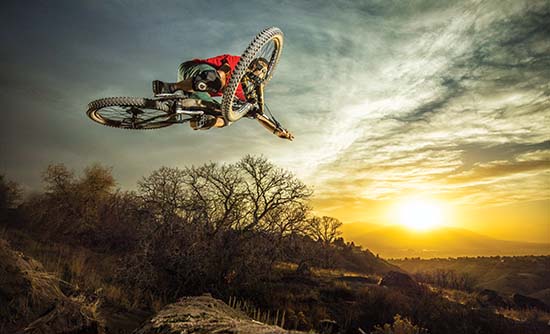 |
 |
| current issue |  |
past issues |  |
send a letter/news |  |
address update |  |
advertise |  |
about us |  |
alumni home |
Going to Extremes
Page 4 of 4
Previous
To that end, Kemple's recent shoot at Denali is part of a new category of personal work where he spends a week or so with a subject, "capturing their energy or the place's energy" while challenging himself to shoot the before-seen from a fresh perspective. His aerial shooting brought a new look at the same awe-inspiring landscape captured a half-century earlier by one of his role models, the pioneering photographer and mapmaker Bradford Washburn. "My friends and colleagues who are pure artists tend to do things just because it feels right," he says, explaining the challenges that more calculating, left-brain adventurers face. "I'm a little envious of that because I'm more of a thinker. I do a lot of planning, so when I'm scrambling around on top of cliffs or in an avalanche-prone area trying to get one shot, I am usually asking myself, 'Is it really worth it?' I guess my answer is, 'Yeah, it is.' " For Kemple, anything is possible in the future, including a longer-term project. He's not yet sure what form that might take, but the idea of deeper immersion and an enduring legacy adventure is one he looks forward to. More often now, he stays longer when he travels, attempting to genuinely answer the question he inevitably hears when he returns: What is the exotic place you've just been to like? "Some of the most successful photographers from a business and art perspective have been really good at staying focused on telling the longer-term story of a place," Kemple says, mentioning as an example James Balog's decade-long "Chasing Ice" project, which documents the impact of climate change on the world's glaciers. "I'm trying to get my mind around that. I think there's a part of me that loves the instant gratification of what I do—maybe it's a generational thing—but I have recently thought a lot about this. It's not that the idea of having to work hard doesn't appeal to me, it's just maybe I haven't found the right thing to talk about yet." All told, Kemple travels 300 days a year for far-flung shoots. He is still connected to New Hampshire by his parents, who live in Derry, and by his phone number, which retains the 603 area code. And even while traveling across six continents and 30 countries, he is connected to the feelings he first felt as a photographer when he and high school friends road-tripped through the mountains in the summer, hiking and climbing and photographing. Kemple didn't get back to New Hampshire this year, but oftentimes his dad, who spurred his love of climbing, finds him. He leaves a key in an arranged spot outside his home in case his dad rolls through. "He climbs more than me," says Kemple. In fact, when we talked last July, Kemple was looking at his father's pictures, a steady stream of iPhone images coming from his parents' tandem bicycle tour of the French countryside. Kemple chuckled at their enthusiasm, adding that in a few weeks, he planned to join his dad near Chamonix for some classic climbs in the Alps. Kemple's mom will pass, he says. She isn't a climber, and, although she's proud, she probably already knows more about what her husband and son are up to than she wants to. ~
Check out Getting the Shot for Tim Kemple's descriptions of the photos featured here. |
blog comments powered by Disqus


